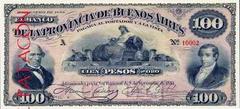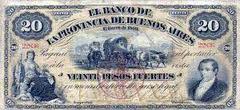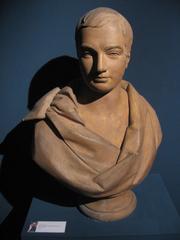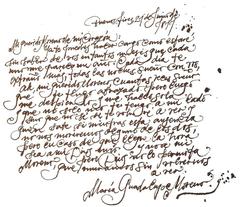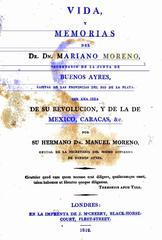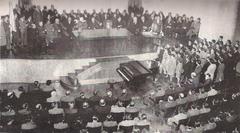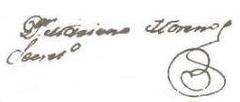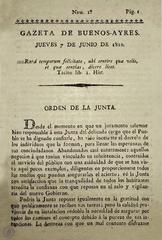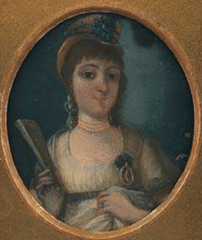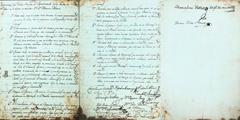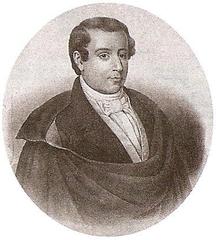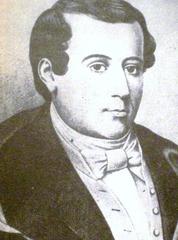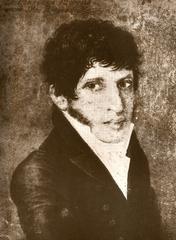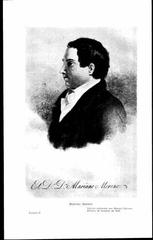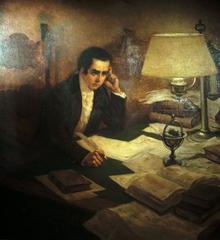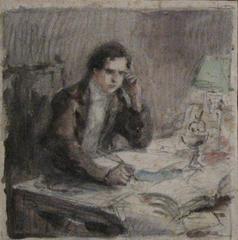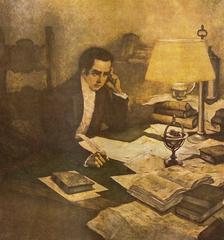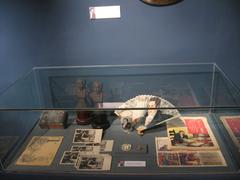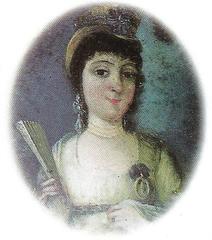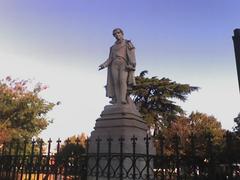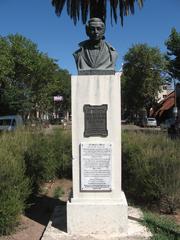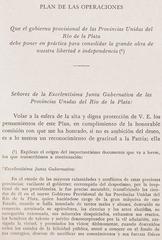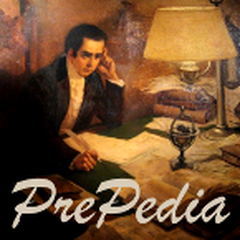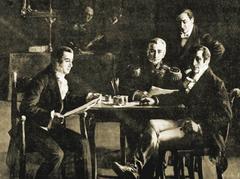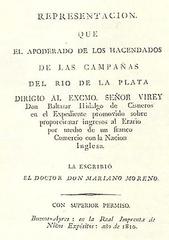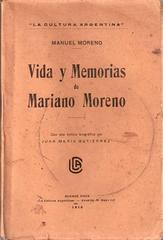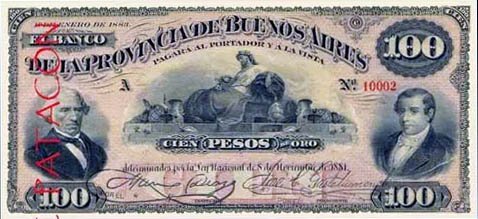
Mariano Moreno Buenos Aires Visiting Hours, Tickets, and Travel Guide
Date: 14/06/2025
Introduction to Mariano Moreno Monument and Its Significance
Nestled in the historically rich Buenos Aires Province, Mariano Moreno represents Argentina’s ongoing quest for independence and national identity. This locality, alongside the renowned Mariano Moreno National Library and the iconic Monumento a Mariano Moreno, provides visitors with an immersive journey through Argentina’s revolutionary past, architectural treasures, and cultural milestones. Named after Mariano Moreno—a lawyer, journalist, and one of the pivotal figures of the May Revolution of 1810—these destinations collectively showcase the transformative spirit of early 19th-century Argentina.
Travelers to Mariano Moreno can enjoy the town’s tranquil charm, tracing the legacy of a man whose intellectual and political efforts shaped the nation’s foundations (Visiting Mariano Moreno: History, Attractions, and Travel Tips for Buenos Aires Historical Sites). The Mariano Moreno National Library, located in the elegant Recoleta neighborhood, stands as a major cultural institution, housing nearly a million items, from rare manuscripts to invaluable archives. Its striking brutalist architecture and panoramic reading rooms provide insight into Argentina’s literary and political evolution (Mariano Moreno National Library Buenos Aires: Visiting Hours, Tickets & History).
The Monumento a Mariano Moreno in central Buenos Aires further commemorates his legacy. Open 24/7 and free to the public, this landmark is a popular site for reflection and is frequently included in historical walking tours (Visiting the Monumento a Mariano Moreno: Hours, Tickets, and Historical Insights in Buenos Aires).
This comprehensive guide offers detailed insights into Mariano Moreno’s historical significance, practical visitor information, accessibility, nearby attractions, and expert tips to enhance your exploration of Buenos Aires’ historical heart. Whether you are a history enthusiast, architecture lover, or curious traveler, understanding Mariano Moreno’s enduring influence will deepen your appreciation of Argentina’s rich cultural tapestry.
Table of Contents
- Introduction
- Historical Origins of Mariano Moreno
- Mariano Moreno: The Man Behind the Name
- Mariano Moreno’s Significance in Argentine Memory
- Essential Visitor Information
- Mariano Moreno National Library Buenos Aires
- Visiting the Monumento a Mariano Moreno
- FAQ
- Conclusion
- Call to Action
- Related Articles
Historical Origins of Mariano Moreno
Mariano Moreno, named after the influential lawyer and politician (1778–1811), is emblematic of Argentina’s early 19th-century fight for independence. As a key architect of the May Revolution, Moreno’s vision for local autonomy and reform left an indelible mark on the nation’s development. The town, now primarily residential, emerged from Buenos Aires’ metropolitan expansion and remains closely tied to the narrative of independence and reform.
Mariano Moreno: The Man Behind the Name
Early Life and Education
Moreno was born in Buenos Aires in 1778, the eldest of fourteen children in a family of Spanish descent. He attended the San Carlos Royal College and later the University of Chuquisaca, where Enlightenment ideals deeply influenced his world view.
Political and Intellectual Contributions
Moreno advised the Buenos Aires Cabildo and promoted local self-governance and indigenous rights. His influential treatise, “The Representation of the Landowners,” argued for free trade and positioned him as a leading liberal thinker.
Role in the May Revolution
As Secretary of War and Government in the Primera Junta, Moreno championed immediate reforms, civil liberties, and democratic values during the 1810 revolution, driving Argentina toward independence.
Legacy and Historical Debate
While Moreno’s political ideology continues to inspire debate among historians, his role in securing Argentine independence is undisputed. His legacy is preserved through institutions like the National Library that bear his name.
Mariano Moreno’s Significance in Argentine Memory
Moreno is a symbol of reform, enlightenment, and national awakening. His advocacy for free trade, education, and the rights of marginalized groups laid the groundwork for Argentina’s future. Landmarks such as Plaza Mariano Moreno and Avenida de Mayo are enduring testaments to his influence and must-see sites for those exploring Buenos Aires’ history.
Essential Visitor Information
Visiting Hours and Tickets
Mariano Moreno, as a locality, is open for exploration at any time and does not require tickets or have set visiting hours. For related sites in Buenos Aires, such as the National Library and Plaza Mariano Moreno, visiting hours usually range from 9:00 AM to 6:00 PM. Public plazas are free to enter, while some museums may charge modest entry fees. Always verify the latest information through official channels.
Guided Tours and Special Events
Although the town itself lacks formal guided tours, many Buenos Aires historical tours include stops at sites associated with Mariano Moreno. Annual commemorative events occur around the May Revolution (May 25). Check local or official tourism resources for up-to-date event schedules.
Accessibility and Safety
Mariano Moreno is accessible via commuter trains and buses from Buenos Aires. The town is generally safe during the day, though standard precautions are advised. Accessibility for visitors with disabilities is limited in Mariano Moreno, but major Buenos Aires attractions are more accommodating.
Getting There and Around
Regular train and bus services connect Buenos Aires to Mariano Moreno. Most visitors base themselves in Buenos Aires and make day trips to the area and its historical sites.
Attractions and Nearby Historical Sites
From Mariano Moreno, travelers can easily access prominent Buenos Aires attractions:
- Plaza de Mayo: Historic square at the nation’s political heart.
- Avenida de Mayo: A grand avenue linking key historical sites.
- National Historical Museum: Displays on the May Revolution and independence.
- Metropolitan Cathedral: Final resting place of General José de San Martín.
Local Experience and Practical Tips
- Visit Duration: The town can be experienced within a few hours.
- Amenities: Basic cafes and shops are available; accommodations are limited.
- Language: Spanish is spoken; learning a few phrases is helpful.
- Etiquette: Politeness and basic greetings (“buen día”) are appreciated.
Mariano Moreno National Library Buenos Aires: Visiting Hours, Tickets, and History
Introduction
The Mariano Moreno National Library (Biblioteca Nacional Mariano Moreno) is a must-see for history lovers, architecture enthusiasts, and anyone eager to experience Argentine culture. Founded in 1810 by Mariano Moreno, the library was established to foster intellectual growth and preserve the nation’s documentary heritage (Buenos Aires Tourism). Today, it houses close to a million items, including rare books, manuscripts, and photographs (Vamos Spanish).
Library History and Significance
The library has mirrored Argentina’s turbulent past, relocating several times: it began in the Cabildo (1810–1812), moved to Manzana de las Luces (1812–1901), then to Mexico 500 (1901–1992). Legendary directors like Jorge Luis Borges shaped its legacy.
Architectural Highlights
The current brutalist building, designed by Clorindo Testa and colleagues, opened in 1992 after a 1961 competition. Its bold concrete structure and panoramic reading rooms are architectural landmarks in the Recoleta neighborhood (Buenos Aires Tourism).
Site History: Palacio Unzué and Evita Perón
Built on the grounds of the former Palacio Unzué—where Eva Perón died in 1952—the library site is layered with historical significance (Buenos Aires Tourism).
Collections and Treasures
The library’s vast collection includes 11,000 rare volumes from the 16th and 17th centuries, 21 incunabula, a page from the Gutenberg Bible, and the region’s most extensive newspaper archive (Vamos Spanish).
Visitor Information: Hours, Tickets & Access
- Hours: Monday–Friday, 10:00 AM–7:00 PM; Saturday, 10:00 AM–5:00 PM; closed Sundays and holidays.
- Tickets: General admission is free; special events may require tickets (available onsite or on the official website).
- Location: Agüero 2502, Recoleta. Accessible by public transport, taxi, or on foot.
Amenities and Facilities
- Nine spacious reading rooms for up to 940 readers.
- Exhibitions, lectures, and cultural programs.
- Guided tours (check schedules online).
- Full accessibility with ramps and elevators.
Visit Tips
- Arrive on weekday mornings for a quieter experience.
- Identification is required for reading rooms.
- Photography is allowed in public areas, with some restrictions.
- Families can enjoy exhibitions and tours.
- Combine your visit with nearby attractions like Recoleta Cemetery and Floralis Genérica (Vamos Spanish).
Additional Attractions Near Mariano Moreno National Library
- Recoleta Cultural Center: Contemporary art and performances next to the library.
- Floralis Genérica: Iconic moving flower sculpture, a short walk away.
- Recoleta Cemetery: Resting place of Eva Perón, guided tours available.
- El Ateneo Grand Splendid: Famous bookstore housed in a converted theater.
- El Rosedal Park: Rose garden in Palermo, best visited in October–November.
- San Telmo Market: Antiques, street food, and live tango shows.
- Avenida Corrientes & Teatro Colón: Theaters, pizzerias, and world-class opera house.
Practical Visitor Tips for Buenos Aires
- Transportation: Use Subte (metro), buses, taxis, or ride-sharing apps.
- Airports: Ezeiza (international, 1 hour from downtown) and Aeroparque (domestic, 15 minutes).
- Currency: Argentine Peso (ARS); cash preferred, use official exchange houses.
- Safety: Stay alert in crowded places; use registered taxis at night.
- Dining: Dinners start late, casual dress is standard.
- Language: Spanish is the official language.
- Weather: Spring and autumn are most pleasant.
- Health: Tap water is safe; insect repellent recommended in summer.
- Accessibility: Major sites are accessible; check in advance for older buildings.
- Connectivity: Free Wi-Fi is common; consider a local SIM.
- Reservations: Book tours, shows, and popular restaurants ahead.
- Etiquette: Greet with a kiss on the right cheek; polite greetings are appreciated.
Visiting the Monumento a Mariano Moreno: A Must-See Historical Site in Buenos Aires
Why Visit the Monumento a Mariano Moreno?
The Monumento a Mariano Moreno is one of Buenos Aires’ most significant landmarks, celebrating the life and legacy of a foundational independence hero. Its central location near Plaza de Mayo makes it a key destination for those exploring the city’s revolutionary history.
Visitor Information
- Hours: Open 24/7, year-round.
- Admission: Free and open to the public.
- Accessibility: Pedestrian area with paved paths; accessible to those with mobility challenges.
- Directions: Walk from Plaza de Mayo; Subte (Lines A or D) to Plaza de Mayo/Catedral stations; multiple bus lines nearby.
Exploring the Monument and Surroundings
- The Monument: Features a striking sculpture honoring Moreno; informational plaques provide historical context.
- Nearby Sites: Plaza de Mayo, Casa Rosada, Manzana de las Luces, Museo Histórico Nacional.
- Guided Tours: Many walking tours include the monument; annual commemorations take place during the May Revolution.
Visuals and Interactive Resources
- High-quality images and virtual tours are available on official tourism platforms.
- Use interactive maps or travel apps for efficient navigation.
Frequently Asked Questions (FAQ)
Q: What are the visiting hours for Mariano Moreno and related sites?
A: The town and monument are accessible 24/7; the National Library is open Monday–Friday, 10:00 AM–7:00 PM, and Saturdays 10:00 AM–5:00 PM.
Q: Are there entrance fees?
A: Public outdoor sites are free; library admission is free, but some events or exhibitions may require tickets.
Q: How do I get to Mariano Moreno or the monument?
A: Use commuter trains or buses for the town; for the monument, take the Subte (Lines A or D) or walk from central Buenos Aires.
Q: Is accessibility available for visitors with disabilities?
A: The National Library and major monuments are accessible; accessibility in the town of Mariano Moreno is more limited.
Q: Are guided tours available?
A: Yes, many guided tours of Buenos Aires include these landmarks—advance booking is recommended for specialized tours.
Conclusion
Mariano Moreno’s enduring legacy is woven throughout Buenos Aires—from the peaceful locality bearing his name to the grand National Library and the prominent monument in the city center. These sites provide a multi-layered experience of Argentina’s revolutionary origins, intellectual achievements, and cultural vibrancy. Whether you are tracing the steps of history or seeking contemporary cultural experiences, Mariano Moreno’s story and the landmarks honoring him promise a memorable and enriching journey.
Stay updated and enhance your visit with official tourism websites, the Audiala app, and our regular travel tips for Buenos Aires’ historical wonders.
Related Articles
References and Further Reading
- Visiting Mariano Moreno: History, Attractions, and Travel Tips for Buenos Aires Historical Sites, 2024, Audiala (https://audiala.app)
- Mariano Moreno National Library Buenos Aires: Visiting Hours, Tickets & History, 2024, Buenos Aires Tourism (https://turismo.buenosaires.gob.ar/en/otros-establecimientos/national-library)
- Mariano Moreno National Library Visiting Hours, Tickets, and Nearby Attractions in Buenos Aires, 2024, Vamos Spanish (https://vamospanish.com/discover/best-spots-in-buenos-aires/)
- Visiting the Monumento a Mariano Moreno: Hours, Tickets, and Historical Insights in Buenos Aires, 2024, Audiala (https://audiala.app)
